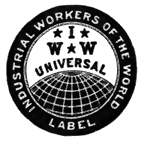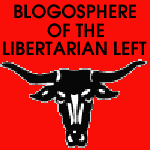Doc Searls on the Intention Economy
Searls' "Intention Economy" closely parallels the idea of the Pull Economy (which I wrote about in this post). The term Intention Economy is intended as a contrast to the Attention Economy (roughly equivalent to the Push Economy), whose perspective
The Intention Economy, on the other hand,
To the extent that "Intention" parallels "Pull," though, it goes a lot further than that. The production process itself will be driven by the consumer. In David Bollier's words,
And the best production methods for this economic model, arguably, involve small-scale production for local markets, using general-purpose, flexible production technology designed for short production runs (See "The Superior Efficiency of Small-Scale Organizations" and "Follow-up: P2P, the Two Economies, and Desktop Manufacturing").
is sell-side. Its point of view is anchored with sellers, not buyers.
This is natural. Most of us are in business, one way or another. We're sellers who want buyers.
The Intention Economy, on the other hand,
grows around buyers, not sellers. It leverages the simple fact that buyers are the first source of money, and that they come ready-made. You don't need advertising to make them.
The Intention Economy is about markets, not marketing. You don't need marketing to make Intention Markets.
The Intention Economy is built around truly open markets, not a collection of silos. In The Intention Economy, customers don't have to fly from silo to silo, like a bees from flower to flower, collecting deal info (and unavoidable hype) like so much pollen. In The Intention Economy, the buyer notifies the market of the intent to buy, and sellers compete for the buyer's purchase.
To the extent that "Intention" parallels "Pull," though, it goes a lot further than that. The production process itself will be driven by the consumer. In David Bollier's words,
a “pull economy” – the kind that appears to be materializing in online environments – is based on open, flexible production platforms that use networking technologies to orchestrate a broad range of resources. Instead of producing standardized products for mass markets, companies use pull techniques to assemble products in customized ways to serve local or specialized needs, usually in a rapid or on-the-fly process.
Instead of companies pushing their products at us (in pursuit of their own strategic or competitive advantages), the networked environment radically empowers individuals, and communities of like-minded individuals, to pull the products and services that they want, on their own terms and time requirements. For example, small groups of people with unusual niche interests – say, extreme skateboarders or opera buffs – can now aggregate their consumer demand and successfully induce businesses to serve their specialized interests. In the process, many corporations are having to radically re-organize themselves in order to serve the emerging “pull” market demand.
And the best production methods for this economic model, arguably, involve small-scale production for local markets, using general-purpose, flexible production technology designed for short production runs (See "The Superior Efficiency of Small-Scale Organizations" and "Follow-up: P2P, the Two Economies, and Desktop Manufacturing").









0 Comments:
Post a Comment
<< Home